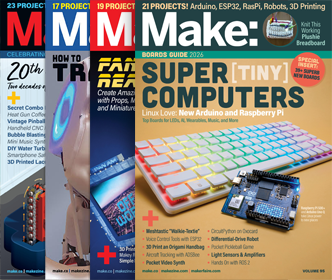Today, on the 75th anniversary of the opening of the San Francisco Bay Bridge, a consortium of San Francisco Bay Area arts organizations have announced a campaign to fund an enormous LED light installation that will run abstract, glittery animations across the vertical cables of the West Span of the bridge.
Proposed by artist Leo Villareal, The Bay Lights project will be a grid of 25,000 white LEDs spaced every foot on the suspension cables. “Each node will be individually addressable…each single pixel is controllable but working as a group to create an overall effect,” says Villareal.
Villareal has developed custom software and utilized Max/MSP/Jitter to get to a place of nuanced, three-layer control of the grid — something akin to video mixing. “It’s a long a process of making these discoveries, layering, refining; it becomes kind of like painting.
A graduate of ITP at NYIU, Villareal used to make his own LED boards and sequencers — when he was working with a microcontroller and 16 lights. Now Villareal leverages commercially available Phillips hardware, but is deep into designing custom enclosures that could secure and protect the Bay Lights grid over its two-year lifespan.
Villareal has authored other fairly massive LED projects (witness his permanent 200′ interior installation in DC at the National Gallery of Art, or his recent Tampa Museum building facade project), but the Bay Bridge project would be his largest public artwork yet. To give you an idea of scale: the Bay Lights are 7x the scale of the hugely successful light array that was installed on the Eiffel Tower.
In a video interview about The Bay Lights, Villareal speaks of his interest in seeing how the installation could transform the vast landscape of San Francisco Bay into a shared space. “I’m very interested in scale, of what happens in shrinking this whole space down by creating this focal point.”
Of course, a project of this size has a price tag: $7M for a two-year run. Interestingly, because of the energy-efficient nature of LEDs, only $11K of the budget is for electricity — and they’ve already covered that amount with a donation of solar credits by Clean Path. Most of the budget estimate is for installation: the project would take four to six months to install, and would have to be installed at night, involving lane closures—not to mention the crew flying in harnesses, hanging precision pieces of electronics in the wind.
The Bay Lights has been in discussion with Caltrans for over a year on permits, and the team’s goal is to have funding by March and to begin installation October of 2012. A campaign to secure the funding has been launched, and the project is looking to civic minded individuals and institutions to contribute towards turning on the lights.
Find out more about The Bay Lights—and participate—at their website.
ADVERTISEMENT






